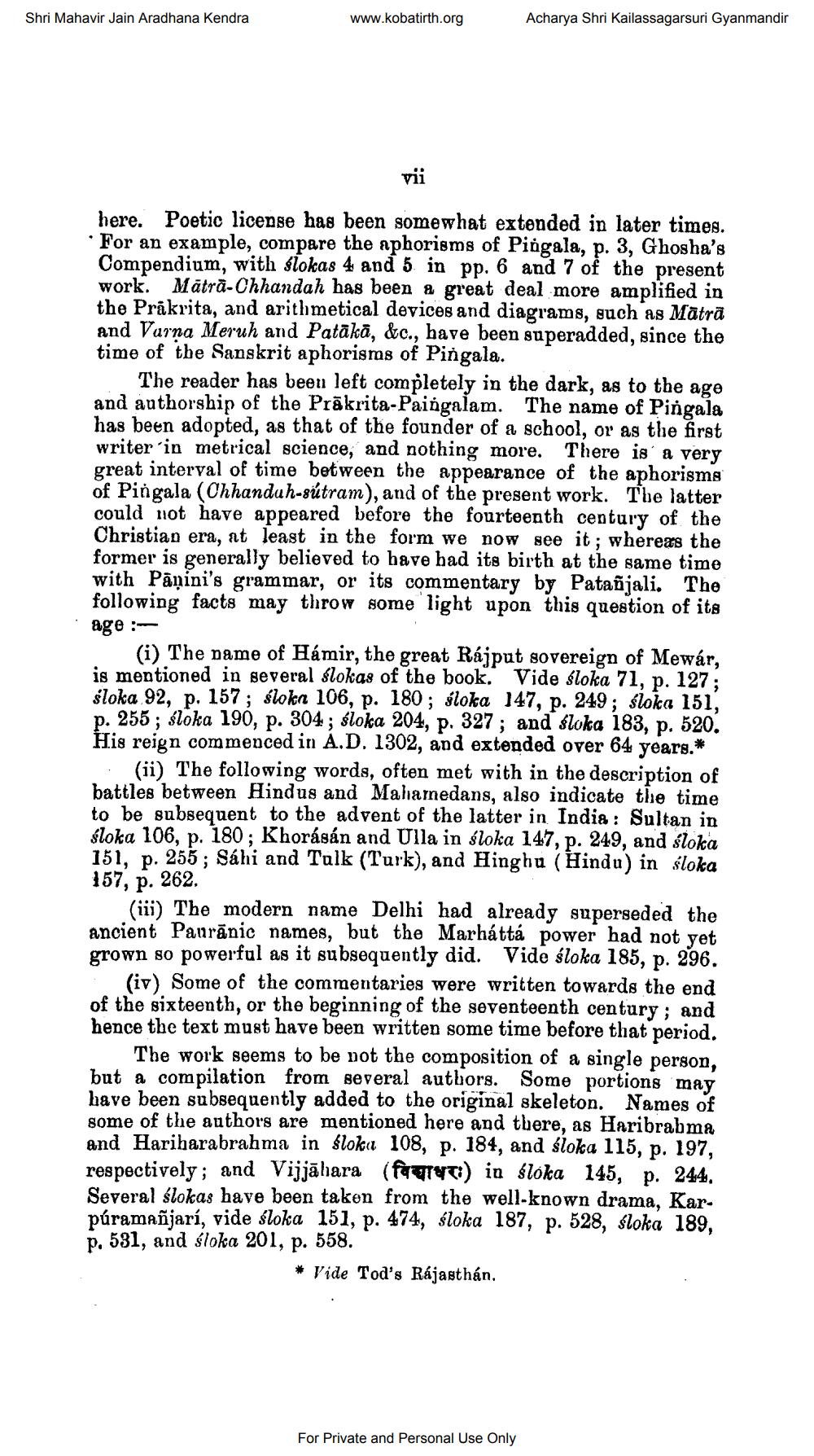________________
Shri Mahavir Jain Aradhana Kendra
www.kobatirth.org
vii
Acharya Shri Kailassagarsuri Gyanmandir
here. Poetic license has been somewhat extended in later times. For an example, compare the aphorisms of Pingala, p. 3, Ghosha's Compendium, with slokas 4 and 5 in pp. 6 and 7 of the present work. Matra-Chhandah has been a great deal more amplified in the Prakrita, and arithmetical devices and diagrams, such as Mātrā and Varna Meruh and Patākā, &c., have been superadded, since the time of the Sanskrit aphorisms of Pingala.
The reader has been left completely in the dark, as to the age and authorship of the Prakrita-Paingalam. The name of Pingala has been adopted, as that of the founder of a school, or as the first writer in metrical science, and nothing more. There is a very great interval of time between the appearance of the aphorisms of Pingala (Chhandah-sútram), and of the present work. The latter could not have appeared before the fourteenth century of the Christian era, at least in the form we now see it; whereas the former is generally believed to have had its birth at the same time with Panini's grammar, or its commentary by Patañjali. The following facts may throw some light upon this question of its age:
(i) The name of Hámir, the great Rajput sovereign of Mewár, is mentioned in several slokas of the book. Vide sloka 71, p. 127; sloka 92, p. 157; sloka 106, p. 180; sloka 147, p. 249; sloka 151, p. 255; sloka 190, p. 304; sloka 204, p. 327; and sloka 183, p. 520. His reign commenced in A.D. 1302, and extended over 64 years.*
(ii) The following words, often met with in the description of battles between Hindus and Mahamedans, also indicate the time to be subsequent to the advent of the latter in India: Sultan in sloka 106, p. 180; Khorásán and Ulla in sloka 147, p. 249, and sloka 151, p. 255; Sáhi and Tulk (Turk), and Hinghu (Hindu) in sloka 157, p. 262.
(iii) The modern name Delhi had already superseded the ancient Pauranic names, but the Marháttá power had not yet grown so powerful as it subsequently did. Vide sloka 185, p. 296.
(iv) Some of the commentaries were written towards the end of the sixteenth, or the beginning of the seventeenth century; and hence the text must have been written some time before that period.
The work seems to be not the composition of a single person, but a compilation from several authors. Some portions may have been subsequently added to the original skeleton. Names of some of the authors are mentioned here and there, as Haribrahma and Hariharabrahma in sloka 108, p. 184, and sloka 115, p. 197, respectively; and Vijjāhara (fr) in sloka 145, p. 244. Several slokas have been taken from the well-known drama, Karpúramañjarí, vide sloka 151, p. 474, sloka 187, p. 528, sloka 189, p. 531, and sloka 201, p. 558.
* Vide Tod's Rájasthan.
For Private and Personal Use Only




